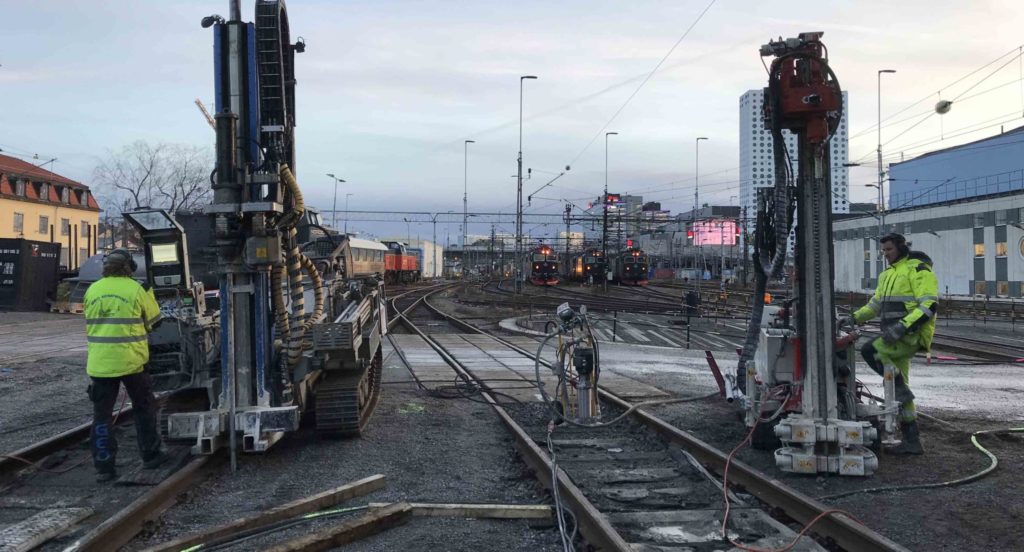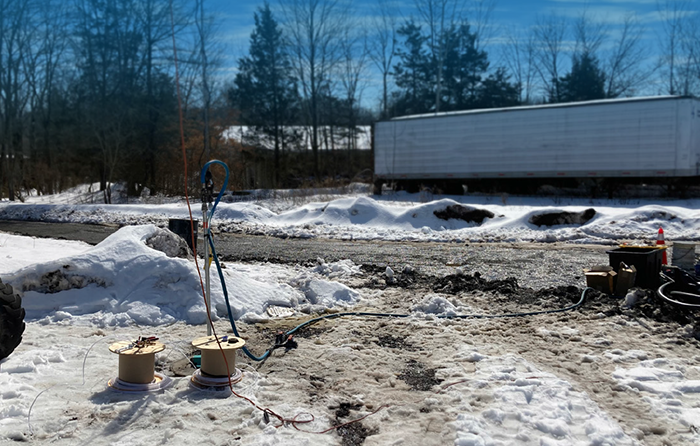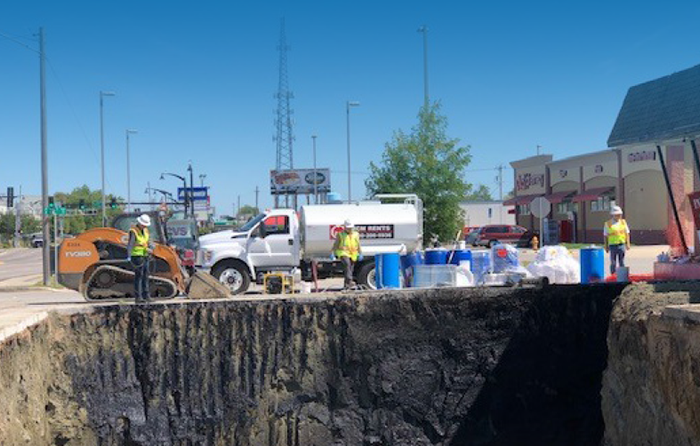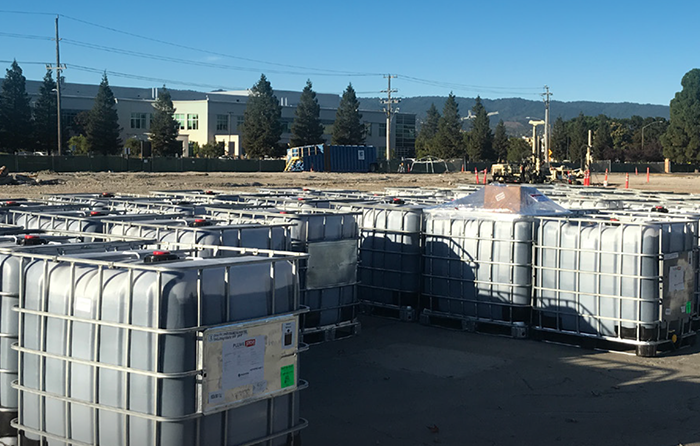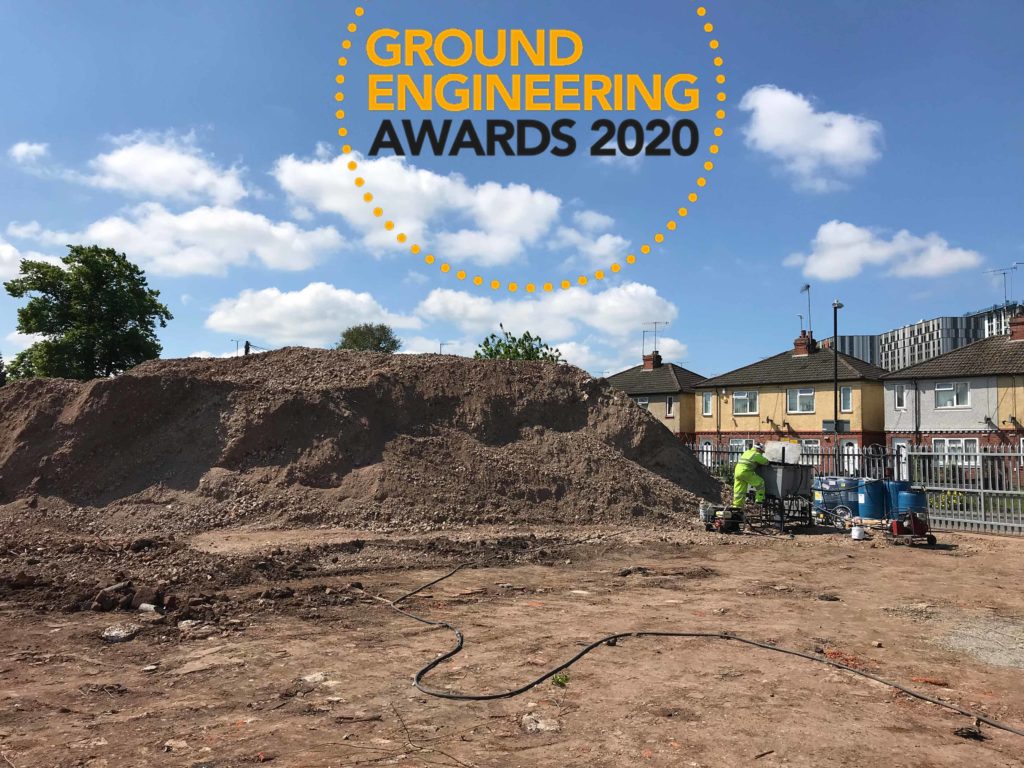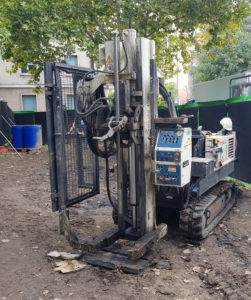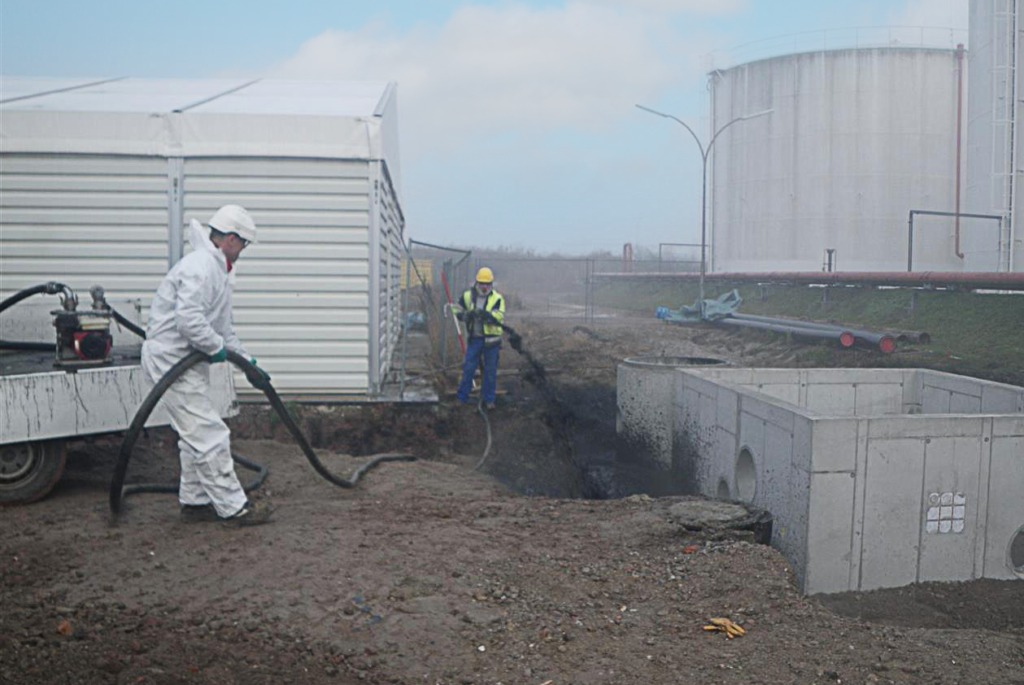DNAPL to Non-Detect: 6 Orders of magnitude reduction of chlorinated solvents
Combined in situ sorption and biological degradation leads to site closure of large manufacturing site in Northern Italy
Chlorinated solvents were used for many years at a former manufacturing facility in Northern Italy. This resulted in contamination of the groundwater underlying a large proportion of this 60,000 m2 site. Groundwater concentrations of up to 155,000 μg/L TCE meant there was a suspected presence of Dense Non Aqueous Phase Liquid (DNAPL) on parts of the site. The contamination posed an unacceptable risk to both on- and off-site receptors and it was determined that active remediation was required on a large proportion of the site.
Remediation Strategy:
REGENESIS created a strategy comprising Enhanced Reductive Dechlorination (ERD) tailored to contaminant concentrations and local geology, across the entire impacted area. This strategy was coupled with an injectable Permeable Reactive Barrier (i-PRB) at the site boundaries. This in situ remediation approach proved to be successful, leading the site to closure after having reached stably very stringent concentrations (VC<0.5 μg/l; TCE<1.5 μg/l) and obtaining up to 6 orders of magnitude reduction in concentrations.
Suite of REGENESIS products applied for ERD: 3-D Microemulsion®, HRC®, HRC-X®, HRC Primer®.
Injectable Permeable Reactive Barrier : PlumeStop®Liquid Activated Carbon™ (CAC)
6m 30s reading time
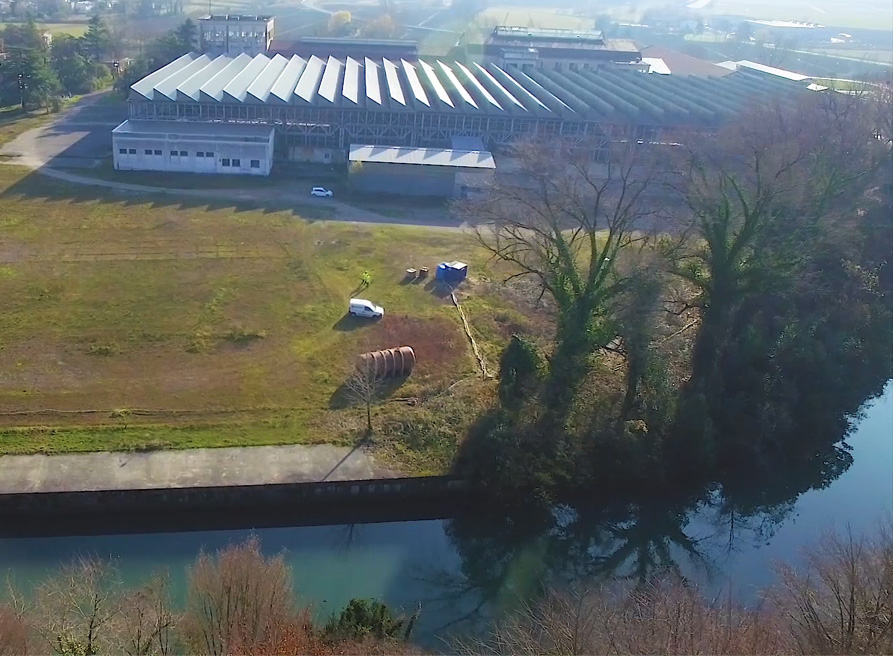
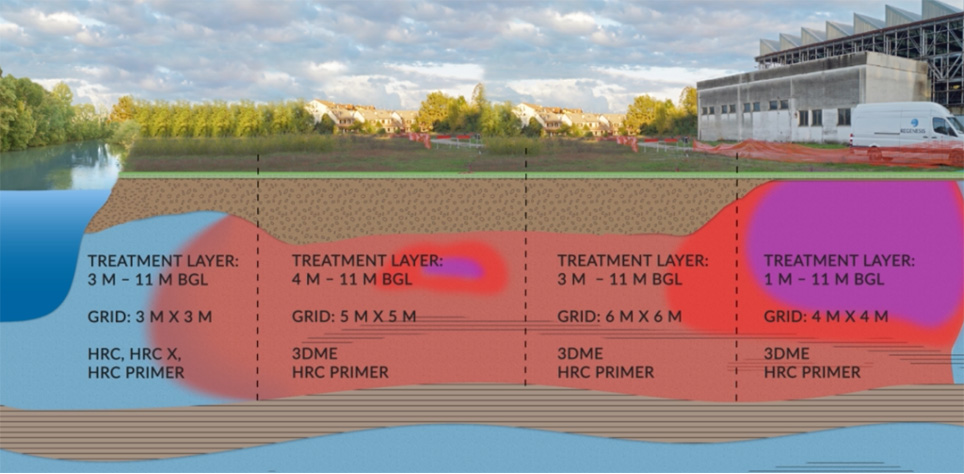
Remediation of the largest train maintenance depot in Northern Europe
Integrated remedial approach achieves >99% contaminant reduction and prevents future recontamination
The Swedish rail authority required that an entirely in situ remediation strategy be implemented across the largest train maintenance depot in northern Europe, located in Hagalund, Sweden.
The contaminated area was approximately 7,500m2, within which 30,000m3 contaminated soil and groundwater required treatment. As part of the remedial works, Swedish remediation contractor Envytech installed a network of additional monitoring wells across the site. This was done to better delineate the plume and identify any unknown contamination prior to commencement of remediation.
Remediation strategy and products applied:
The investigations identified LNAPL across much of the northern area of the site, which required a revised groundwater remediation strategy comprising:
- Dual-phase extraction (DPE) to target the LNAPL, followed by;
- In situ chemical oxidation (RegenOx®);
- Enhanced aerobic bioremediation (ORC-Advanced®); and
- Adsorption & biodegradation (PetroFix®).
Case study highlights:
- Carefully designed integrated remediation strategy used physical, chemical, sorptive and biological treatment
- Innovative use of PetroFix Permeable Reactive Barriers (PRBs) completed to prevent residual contaminant egress from outside of the treatment area and protect against future spills
- Significant reductions of petroleum hydrocarbons have been achieved onsite – starting with LNAPL and reaching stringent target values – within nine months
2m 46s reading time
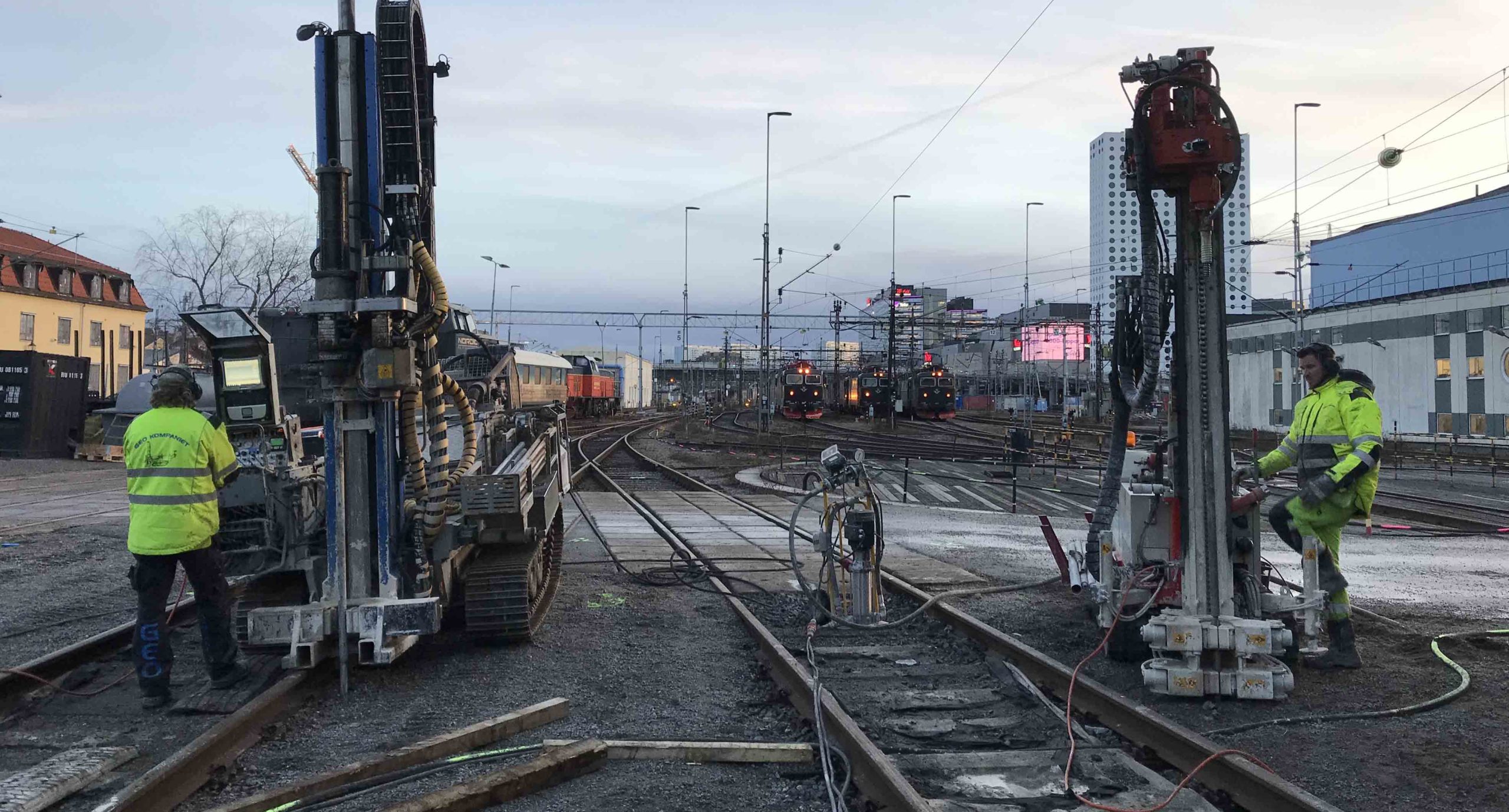
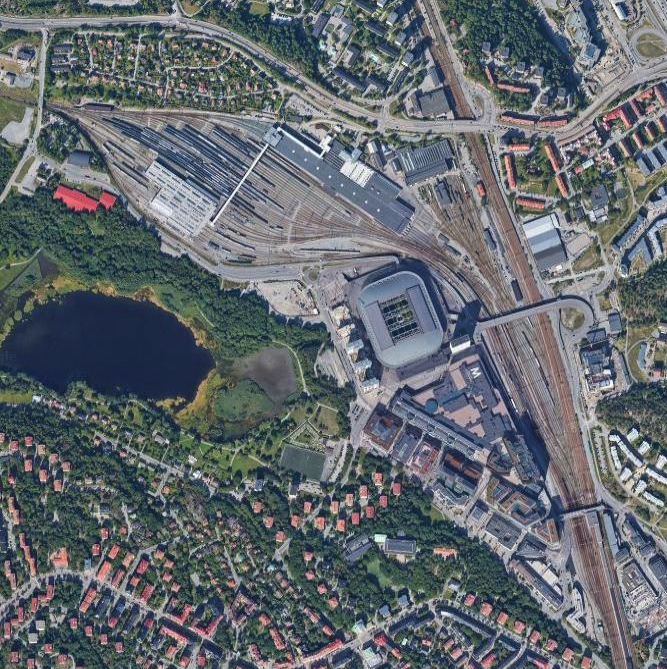
PFAS Removal from Aquifer at Hazardous Site Where AFFF Was Used
This case study reviews an ongoing Pennsylvania Hazardous Site Cleanup Act (HSCA) project where aqueous film-forming foam (AFFF) extinguished a large fire in the 1980s was the target of an innovative pilot study to address per- and polyfluoroalkyl substances (PFAS).
Working closely on behalf of the PADEP, Tetra Tech, a leading provider of consulting, engineering, and technical services worldwide, was principally involved in assessing the options and choosing a technology for the pilot test. This effort led to the decision to conduct a pilot study using PlumeStop®, a patented colloidal activated carbon amendment known to eliminate the risk of PFAS.
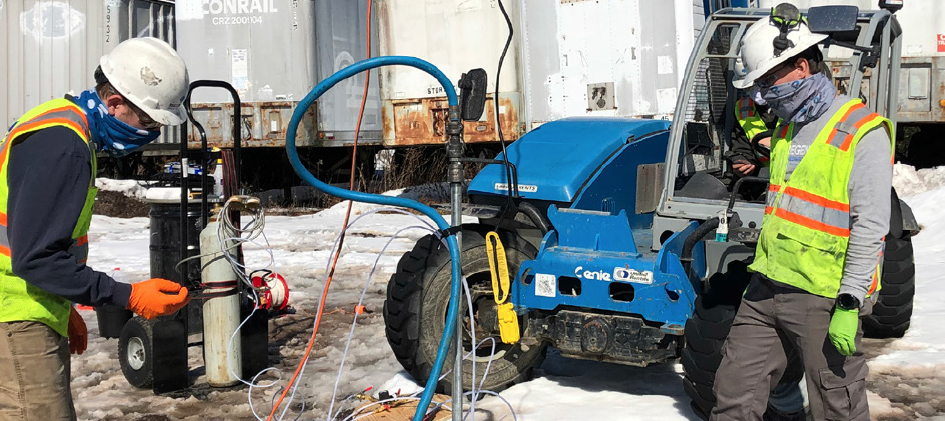
Case study highlights:
- Total PFOS and PFOA reduced from 91,400 to <50 ng/L in one month
- Injection testing effectively used for design confirmation in PlumeStop PFAS remediation pilot study
- Application included innovative injection using straddle packer system to isolate vertical zones
8m 46s reading time
Double pilot study treats TPH at redevelopment site in the Netherlands
PetroFix injection and excavation applications trialled at former workshop and petrol filling station
Introduction
An area in the south west of the Netherlands is to be redeveloped into residential properties. High levels of petroleum hydrocarbons (kerosene, lamp oil and fuel) up to NAPL, had been found at the site.
Remedial action was required to reduce the risk to potential new residents. The environmental company ATKB decided to complete a double pilot trial with PetroFix®. Full-scale treatment has been planned to commence within 12 months of the pilot application. Read the profile to learn what the pilot trial entailed.
1m 54s reading time
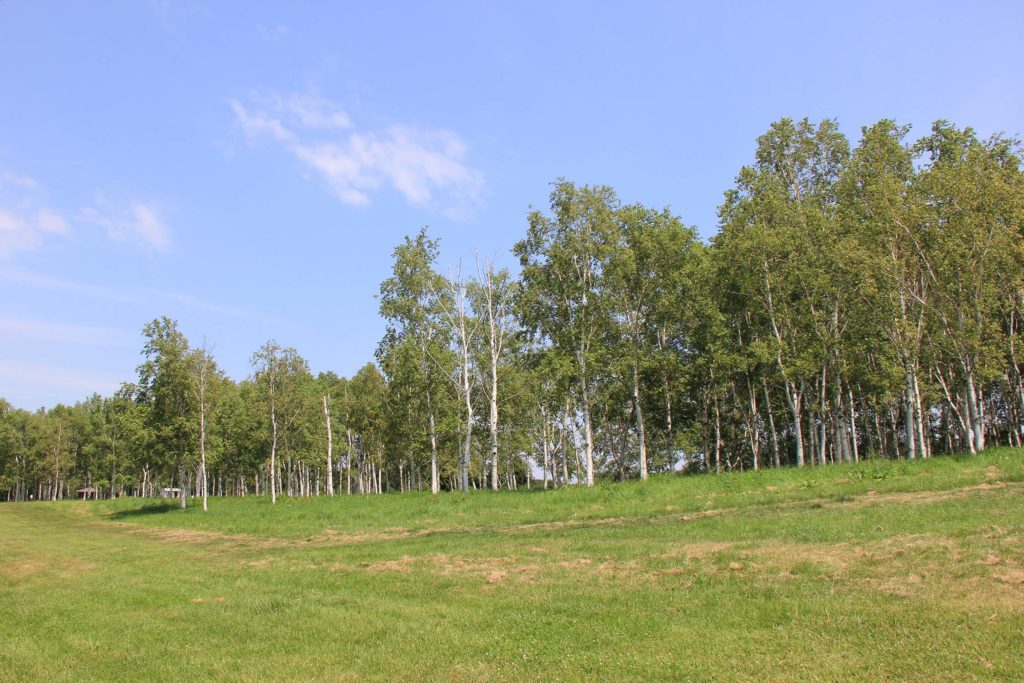

Injectable permeable reactive barrier stops MTBE and benzene plume
Pilot-scale application of PlumeStop and ORC Advanced in the form of an injected permeable reactive barrier proves an effective solution to a long plume under a residential property in Belgium. Full-scale treatment has been scheduled.Read More
Effectively Engineering Rapid Closure of UST Release Sites
This multi-site case study reviews eight underground storage tank (UST) sites where the leading global environmental consulting firm Antea® Group has closed the site or positioned it to be on-track for closure using PetroFix.
Antea Group is amongst the first environmental consulting companies to recognize and adopt PetroFix as a tool to rapidly reduce PHC impacts and achieve remedial objectives in groundwater. Applying PetroFix with economic efficiency, the company successfully advanced a portfolio of legacy UST release sites through the closure process over a short timeframe. In this effort, Antea Group sought and obtained approvals through multiple state regulatory agencies, self-completed the designs to determine dosing and injection layouts, implemented PetroFix treatments using different in situ application methods, and conducted performance monitoring to demonstrate remedial objective attainment.
Multi-site case study highlights:
- Case studies of eight UST sites closed or on-track for site closure using PetroFix, including contaminants treated, approach, remedial design and results
- Antea Group applied PetroFix using in situ application methods which included direct push injections through grid and barrier arrays and excavation emplacement
- Why Antea Group readily adopted a promising new remedial amendment for site closures
13m 45s reading time
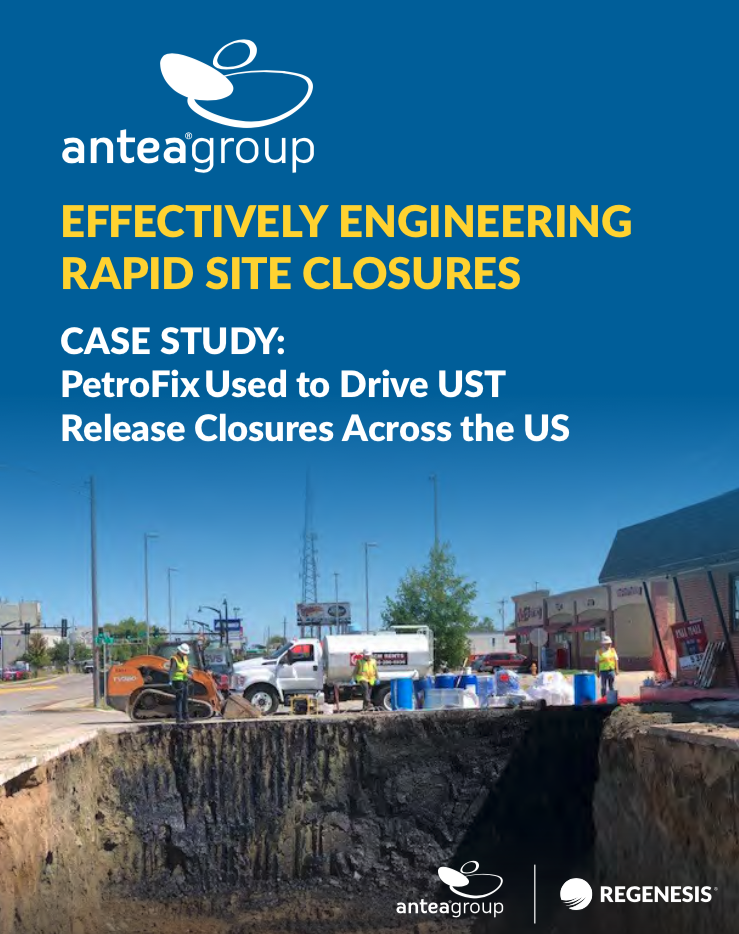
PlumeStop and S-MicroZVI Application Paves The Way For Redevelopment
Case study highlights
This case study reviews a contaminated chlorinated solvent site in northern California, USA, where advanced design verification testing and predictive modeling methods were used to guide a remarkably successful in-situ remediation effort:
-
Highly successful remediation solution using colloidal technologies: PlumeStop and S-MicroZVI
-
Complete reduction of PCE, TCE and daughter products in the treatment areas
-
Flux-based predictive modeling used to optimise remediation to meet two-year timeline
-
Remedial objectives achieved allowed redevelopment of the property

PetroFix in situ PRB replaces cut-off wall design to benefit redevelopment project
Remediation project wins ‘Brownfield Redevelopment Project of the Year’ in Ground Engineering Awards
At the site of a former storage and distribution depot in Coventry, the soils and groundwater were impacted with petroleum hydrocarbons from previous site usage, which included a petrol filling station that had been located just north of the site and also across part of the site itself. Cundall created a multi-phased remediation strategy with Alto Construct to deal with the soils and asked REGENESIS to carry out the groundwater remediation.
REGENESIS installed a PetroFix activated carbon permeable reactive barrier at the edge of the site to capture and promote the biological degradation of high levels of dissolved phase contamination migrating on-site, to protect the redevelopment site as well as the adjacent river.
Case study highlights
- 40m long in situ barrier installation completed within 5 days
- Small working footprint – no disruption to construction works
- This alternative solution provides immediate and long-term groundwater treatment
- GE Awards 2020 winner: The judges commented on the innovative method and recognised the reduced programme and significantly reduced quantities of soil sent to landfill, minimising environmental impact.
2m 25s reading time
Combined ISCR and in situ sorption of a PCE plume on school grounds in Northern Italy
An ongoing manufacturing facility located within a major Italian city created a widespread tetrachloroethene (PCE) contaminant plume in the underlying aquifer. The highly aerobic aquifer has inhibited natural attenuation, with no daughter products detected even after many years.
Environmental company TAUW is in charge of this site and has implemented hydraulic containment within the factory grounds, as required by law. However, there remained a need to target the plume beyond the site boundary, for which they outlined an in situ solution in collaboration with Prof. Marco Petrangeli Papini from Università La Sapienza di Roma.
Case study highlights:
- Safe and easy co-injection of PlumeStop and S-MicroZVI
- 50m long in situ barrier was applied with minimal interference with the school activities
- Significant and rapid decrease of PCE concentrations in all 3 monitoring wells immediately downgradient
4m 47s reading time
Preventative treatment: Petrofix coating allows installation of pipeline through contaminated zone, Germany
A new underground pipeline was required to be installed across a complex chemical plant in southwestern Germany. It was found that part of the pipeline would intersect an area of soil and groundwater impacted with petroleum hydrocarbons and BTEX compounds.
Case Study Highlights:
- Total Petroleum Hydrocarbons and BTEX contamination, up to approx. 10,000 mg/kg
- Topical application of PetroFix onto the excavation base and sides to prevent the occurrence of recontamination
- The combination of sorption and biological degradation results in long term protection of the pipeline and avoidance of potential contaminant migration into and along the pipe bedding
- Results: Monitoring showed that there was 94% less petroleum hydrocarbons in MW-1 compared to MW-2
3m 17s reading time

 Americas
Americas Europe
Europe Français
Français Deutsch
Deutsch Italiano
Italiano Español
Español